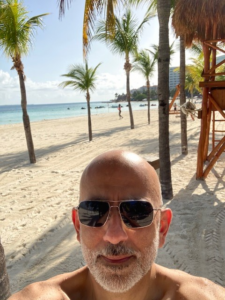Interventional pain management physician Dr. Soin has patented and conducted trials for a new spinal cord stimulation device to treat chronic pain. “It is our mission to treat pain without addictive painkillers,” Dr. Soin states.
Dr. Soin’s theory about blocking pain drove his research to modulate pain.
We are all aware of the opioid crisis that is affecting patients with chronic pain. Not only do pain pills form dependency and lead to addiction, but they don’t treat the source of the pain. This led Dr. Soin to research alternatives for chronic pain and address the root of the problem.
Dr. Soin explains, “In Ohio, we had an opioid crisis, and people were looking for ways to manage their pain, and it ended up taking over their lives.” Dr. Soin’s theory about blocking pain drove his research to modulate pain.
Back pain and nerve pain are triggered by nerve chemical signals that transmit signals from nerve cells to nerve cells and then to the brain. Soin Neuroscience explains that the spinal cord stimulation device was discovered to interfere or block these signals.
The device can also treat constipation and urinary incontinence.
The device is effective for pain associated with nerves. “We also realized that we can treat a lot of things like constipation and urinary incontinence, anything where the nerve is involved in the process,” Dr. Soin explains. “Spinal cord stimulation has been around for a long time, but we have a unique interface and algorithm that communicates with the nerve more like the way nerve cells communicate with each other.”
Soin Neuroscience hopes the device will be on the market within a few years.
It takes several years in the US and clinical trials to get these products approved. We have a few more studies to do, but hopefully, the device will be on the market within the next few years.
The most common pain we treat is lower back pain, joint pain, and neck pain. Almost 35% of people seek out care from their physician for that ailment. “I have my research lab in Dayton, Ohio, where my practice is located,” Dr. Soin explains. “This is where I developed the new nerve stimulator.” During this process, Dr. Soin realized that there is so much to learn about the nerve cells.
Most recently, he developed a treatment for people that are paralyzed. “For patients with paralysis, we are treating a very narrow part, but we are giving them the ability to have a regular bowel movement at will with the push of a button with electrical stimulation.”
Soin Neuroscience strives to offer treatment alternatives for debilitating pain.
It’s important to realize that there are treatments. It takes time and effort to treat the cause, but it’s better to invest the time. People who suffer from chronic pain often give up, and understandably so because it can be challenging to get to the source and treat the cause.
“I had a patient that couldn’t stand for more than 20 minutes due to debilitating back pain. As it turns out, he had a pinched nerve,” Dr. Soin describes. “We ended up doing a minimally invasive procedure to treat his spinal stenosis, otherwise known as a narrowing of the spine.” After the procedure, that patient said he was able to stand for long periods.
One of the best things a person in chronic pain can find is an interventional pain management specialist. Search on Google and see if you can find one near you. There are more options than just pain killers.
Email Amol Soin at drsoin@soinneuroscience.com


